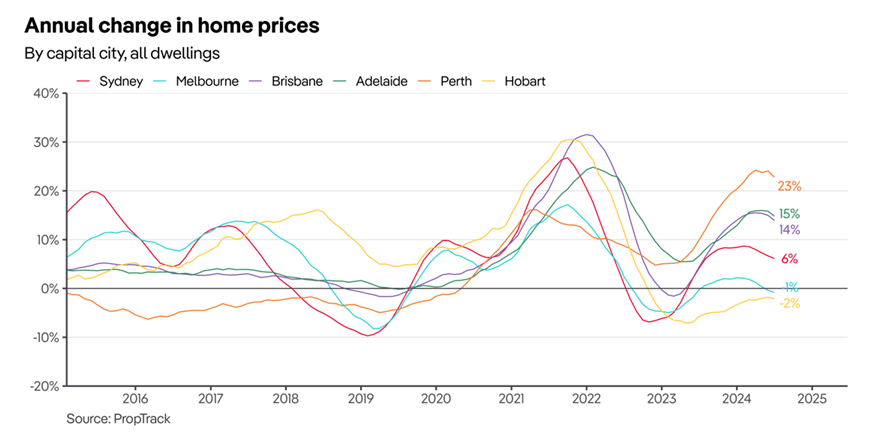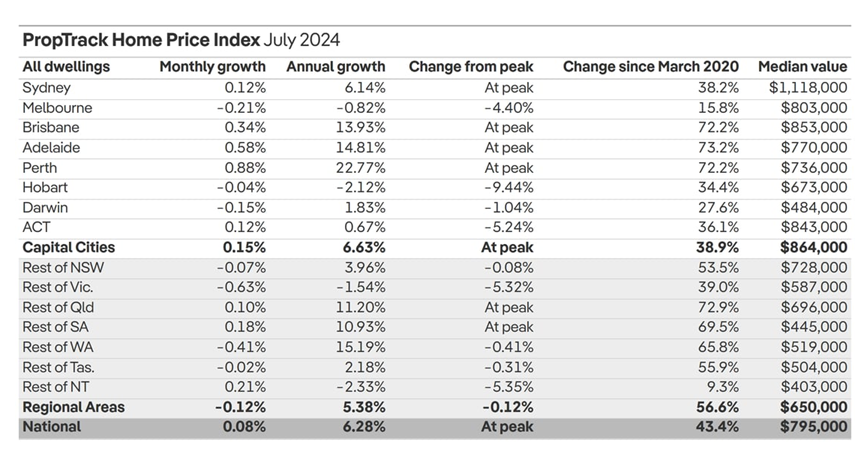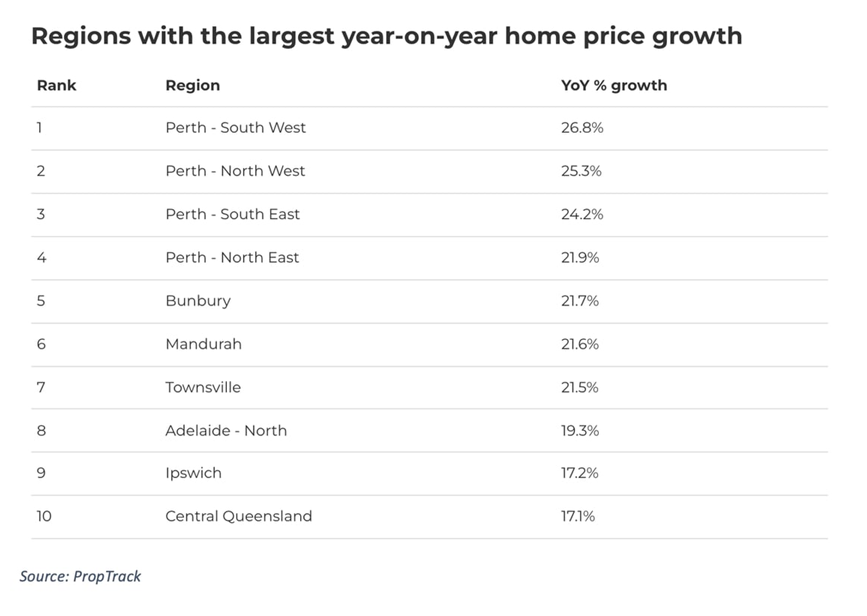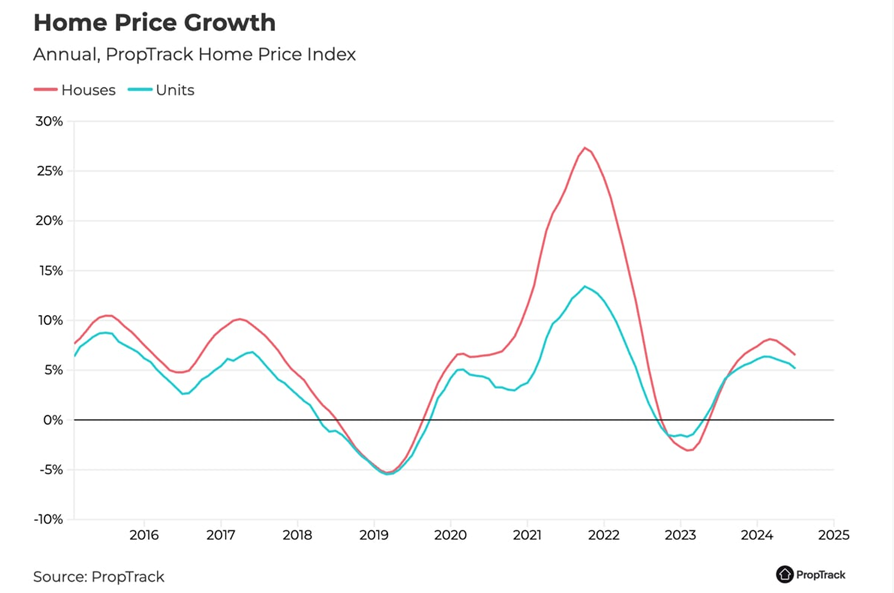

The performance of home values across Australia’s capital cities and regional areas over the past year reveals a multi-speed market, with some areas experiencing significant growth while others lag behind, according to Karen Dellow (pictured above), senior audience analyst at PropTrack.

Perth led the charge with a remarkable 22.77% year-on-year growth in July. Adelaide followed with 14.81%, and Brisbane secured third place with 13.93% growth.
Among regional areas, Western Australia excelled with 15.19% growth, followed by Queensland at 11.20% and South Australia at 10.93%.
“Perth has clinched the gold with 22.77% year-on-year growth in July, while Adelaide secured silver at 14.81%, and Brisbane took bronze with 13.93% growth,” Dellow said.
Sydney’s growth of 6.14% placed it in the middle of the pack, while Melbourne, Hobart, Darwin, and Canberra remained relatively flat over the past year.
Melbourne home values, still recovering from the most recent downturn, are 0.82% lower year-on-year.
“Melbourne home values are still recovering from the most recent downturn and have been unable to claw back the value lost over this time,” Dellow said.
In regional Tasmania, home values increased by 2.18%, outpacing Hobart. However, several regional Victorian areas saw price decreases, with Ballarat experiencing a 4.57% decline and Mornington Peninsula dropping by 3.9%.
“Several regional Victorian areas experienced price decreases over the past year,” Dellow said. “Ballarat had a 4.57% decline in prices, while values in the Mornington Peninsula dropped by 3.9%.”
Drilling down to SA4 regions, Perth showed the most significant growth, with Perth - South West surging 26.83% and Perth - North West growing by 25.31%. Six of the top 10 regions for home price growth in July were in Perth.

Nationally, house values slightly outperformed units, with 6.51% year-on-year growth compared to 5.16% for units. 
“Price growth for houses and units has been similar throughout the past 12 months,” Dellow said, noting that the large growth for houses during the pandemic has leveled off.
As the spring selling season approaches, prices are expected to continue rising, though at a more subdued rate compared to the pandemic-driven surge.
Recent tax cuts, which have boosted household income and borrowing capacities, may increase housing demand in the coming months.
“One factor that may increase demand for housing in the coming months is the most recent tax cuts that have boosted household income along with borrowing capacities,” Dellow said.
Get the hottest and freshest mortgage news delivered right into your inbox. Subscribe now to our FREE daily newsletter.
